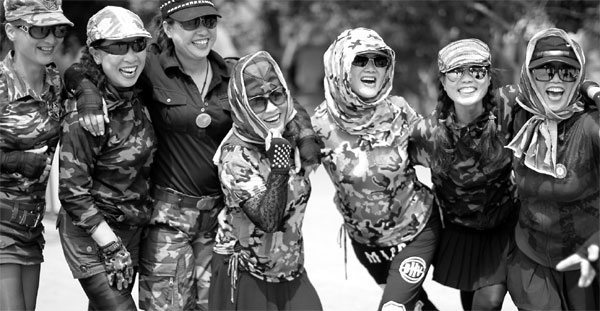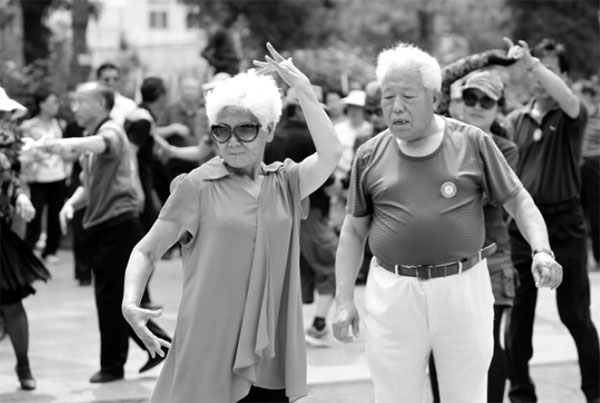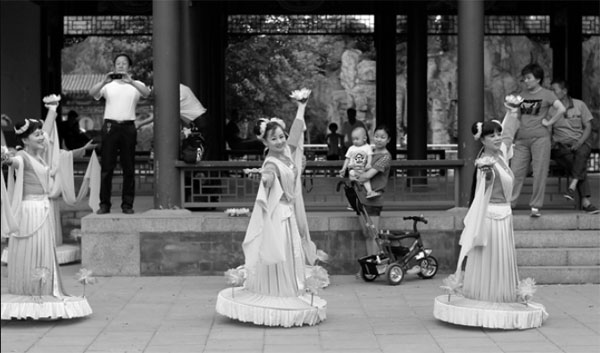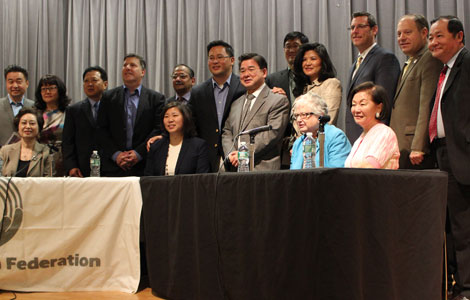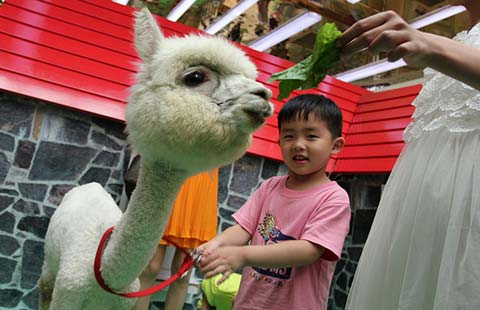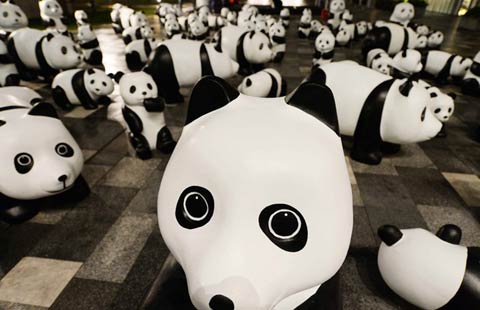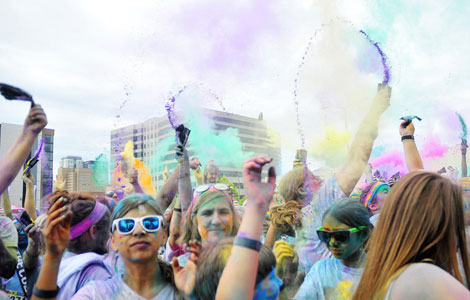Still steppin' lively
Updated: 2014-06-03 07:12
By Chen Nan (China Daily)
|
||||||||
Square dancing is hugely popular among China's elderly citizens, who say it not only keeps them active, but is a great way of having fun in their twilight years. Chen Nan looks at the phenomenon.
Wang Baorong, 71, is wearing a military-style shirt, shorts and fishnet stockings. Two months ago, the septuagenarian joined a dance team and she's never been happier. Together with 200 people, aged between 45 and 75, Wang dances every morning from 8 until noon, mostly to Mandarin pop songs, played by a brick-sized portable music player. "I forget all my troubles when I am dancing. I feel young again and happy," says the Beijing native, who rises at 5 am to spend more than three hours traveling from her home in Fangshan district, in the northern outskirts of Beijing, to Taoranting Park in the southern part of the capital.
Like taichi and singing patriotic songs, square dance or guangchang wu in Chinese, has become a trendy way of exercising and socializing among retired city dwellers.
|
The dancers, (from left to right) Ma Hongwei, 45, Liu Yuru, 56, Ma Hongru, 47, Ge Fang, 56, Jiang Hua, 56, Wang Shuyin, 54 and An Xin, 54, participate in the square-dancing group in Taoranting Park with about 200 others, aged between 45 and 75. Photos by Zou Hong / China Daily |
|
Wang Baorong (left), 71, travels several hours every day to dance at Taoranting Park with other middle-aged and elderly people. |
|
Women, mostly retirees, set up a dance troupe two years ago. They perform a lotus dance at Qishiguan Park in Dongcheng district in Beijing. |
According to Du Peng, chief of the Institute of Gerontology with Renmin University of China, by the end of 2013, there were more than 200 million people over the age of 60, nearly 15 percent of the whole population of China. About 83 percent of people over 60 engage in some form of physical activity.
He points out that 10 years ago, many of the nation's elderly had little education in their youth, but today, 77 percent of elderly people are educated and are looking for a different kind of retirement.
"Elderly people are changing. In the past, they just had few things to entertain them, such as yangko dance, a form of folk dance popular in northern China, but now they want a variety of activities," says Du.
Popular video websites, including Baidu.com and Tangdou.com, have special sections teaching square-dance moves and offering free music downloads.
Zhou Yehong, a 44-year-old office worker at a bank in Luohe city, Henan province, started dancing in 2006 and put her choreography online. One of her videos has been viewed nearly 100 million times.
"In the beginning, I just danced with my colleagues because sitting in the office for a long time caused lots of physical problems, such as back pain and putting on weight," says Zhou, who is also known as Mei Jiu, meaning lasting beauty.
"Within a short period of time, we had more than 200 people joining us, and I realized dancing is a good way to stay healthy and entertain ourselves."
However, square dancing by retirees is not without controversy. Residents in nearby buildings say that the noise is annoying and some complain that it disturbs their children's studies.
Residents in Wuhan, Hubei province, have thrown water and eggs on dancers. In 2013, a Beijinger fired a shotgun into the air and sent three Tibetan mastiffs into a dancing crowd because he "couldn't bear the dance music any more". The man was jailed six months for illegal possession of a firearm.
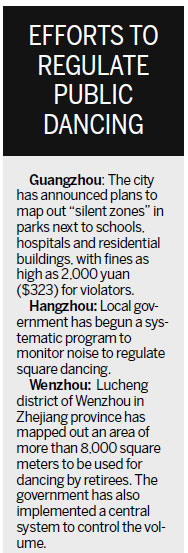
"Are old people supposed to sit around and wait for death? No. We still have our beautiful days," says Wang.
Why is square dancing so popular among retirees? According to Wang, the moves are simple, the music is energetic and it requires no equipment.
She credits dancing with improving her quality of sleep and losing weight. She also says her family is very supportive. "My husband comes with me and my daughter-in-law bought me exercise clothes," she says.
"It's becoming a national issue," says Hu Guozhen, 57, referring to the videos of middle-aged Chinese women dancing outside the Louvre in Paris and a group of elderly women dancing in a train from Lankao county to Zhengzhou city, Henan province, early in May. "I admire their passion for dancing," she says.
"I think they are crazy," says Wang Rong, 31, the daughter of Hu, who works for a State-owned company in Beijing. "I think it's a bit much. They shouldn't disturb others."
Her mother goes to dance in front of a square of a shopping mall near their house in Majiapu, Fengtai district, in Beijing, at 7:30 pm. Over two hours, along with 30 other people, she dances to 20 songs.
Besides improving their health, Hu says dancing keeps her integrated with society.
"My life was boring and isolated after retirement. I just spent my days cooking and cleaning the house. I made lots of friends through dancing. I'm glad to share my life with people my age," she says.
Since the neighborhood where Hu lives is densely populated, they try not to disturb others, trying to dance away from residential buildings and limiting the hours they dance.
"There were some neighbors complaining to us at the beginning and we stop dancing before gaokao (China's annual national college entrance exam in June) and reduce the sound of the music," says Hu.
Contact the writer at chennan@chinadaily.com.cn
(China Daily 06/03/2014 page20)

 Awarding ceremony of 2014 hito Pop Music held in Taipei
Awarding ceremony of 2014 hito Pop Music held in Taipei
 Zhao Liying's photo shoot for Children's Day
Zhao Liying's photo shoot for Children's Day
 'Taken 2' grabs movie box office crown
'Taken 2' grabs movie box office crown
 Rihanna's 'Diamonds' tops UK pop chart
Rihanna's 'Diamonds' tops UK pop chart
 Fans get look at vintage Rolling Stones
Fans get look at vintage Rolling Stones
 Celebrities attend Power of Women event
Celebrities attend Power of Women event
 Ang Lee breaks 'every rule' to make unlikely new Life of Pi film
Ang Lee breaks 'every rule' to make unlikely new Life of Pi film
 Rihanna almost thrown out of nightclub
Rihanna almost thrown out of nightclub
Most Viewed
Editor's Picks

|

|

|

|
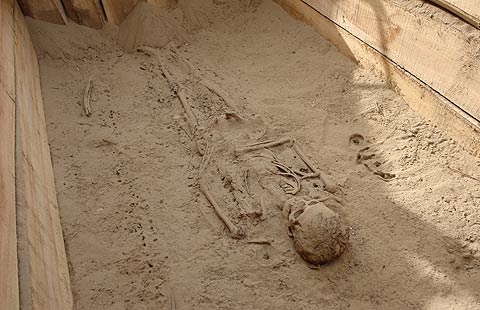
|
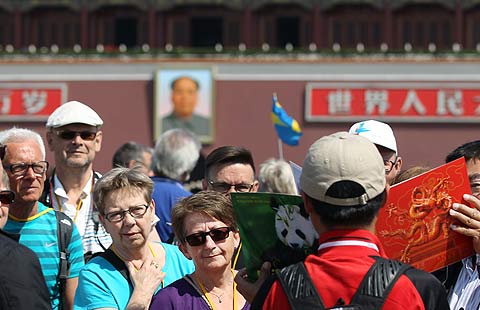
|
Today's Top News
Rapid-fire questions turn up heat on Hagel
Abe, Hagel's accusations rejected
Comfort women shrine dedicated
Shandong delegation eyes California trade
Hainan Air receives its 7th Boeing Dreamliner
Accusations from Abe, Hagel rejected
Chinese publishers adapting to American markets
Helping Asian Americans leverage buying power
US Weekly

|

|
